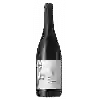
Winery Jeff CarrelBistrologie Blanc
This wine is a blend of 2 varietals which are the Chenin blanc and the Colombard.
This wine generally goes well with fruity desserts, vegetarian or lean fish.
Food and wine pairings with Bistrologie Blanc
Pairings that work perfectly with Bistrologie Blanc
Original food and wine pairings with Bistrologie Blanc
The Bistrologie Blanc of Winery Jeff Carrel matches generally quite well with dishes of rich fish (salmon, tuna etc), shellfish or vegetarian such as recipes of grilled tuna with mediterranean marinade, giant paella cooked on a wood fire or quiche without pastry, courgette and blue cheese.
Details and technical informations about Winery Jeff Carrel's Bistrologie Blanc.
Discover the grape variety: Chenin blanc
It most certainly originates from the Anjou region and is registered in the official catalogue of wine grape varieties on the A1 list. It can also be found in South Africa, Australia, Argentina, Chile, the United States (California), New Zealand, etc. It is said to be a descendant of Savagnin and to have sauvignonasse as its second parent (Jean-Michel Boursiquot 2019). On the other hand, Chenin blanc is the half-brother of verdelho and sauvignon blanc and is the father of colombard.
Last vintages of this wine
The best vintages of Bistrologie Blanc from Winery Jeff Carrel are 2016, 2014
Informations about the Winery Jeff Carrel
The Winery Jeff Carrel is one of of the world's great estates. It offers 91 wines for sale in the of Vin de Pays to come and discover on site or to buy online.
The wine region of Vin de Pays
Vin de Pays (VDP), the French national equivalent of PGI (Protected Geographical Indication) at the European level, is a quality category of French wines, positioned between Vin de Table (VDT) and Appellation d'Origine Contrôlée (AOC). This layer of the French appellation system was initially introduced in September 1968 by the INAO, the official appellation authority. It underwent several early revisions in the 1970s, followed by substantial changes in September 2000 and again in 2009, when all existing VDT titles were automatically registered with the European Union as PGI. Producers retain the choice of using either the VDP or PGI titles on their labels, or both - in the form "IGP-Vin de Pays".
The wine region of Pays d'Oc
Pays d'Oc is the PGI for red, white and rosé wines that are produced over a wide area of the southern coast of France. The PGI catchment area corresponds roughly to the Languedoc-roussillon">Languedoc-Roussillon wine region, one of the largest wine regions in France. The area covers all wines that are not produced under the strict laws that govern AOC-level appellations in the regions: among them, Corbières, Minervois and the Languedoc appellation itself. The Pays d'Oc PGI is arguably the most important in France, producing the majority of the country's PGI wines.
The word of the wine: Performance
Quantity of grapes harvested per hectare. In AOC, the average yield is limited on the proposal of the appellation syndicate, validated by the Inao. The use of high-performance plant material (especially clones) and better control of vine diseases have increased yields. This is not without consequences on the quality of the wines (dilution) and on the state of the market (too much wine). We must not over-simplify: low yields are not synonymous with quality, and it is often in years with generous harvests that we find the greatest vintages (1982 and 1986 in Bordeaux, 1996 in Champagne, 1990 and 2005 in Burgundy...).














